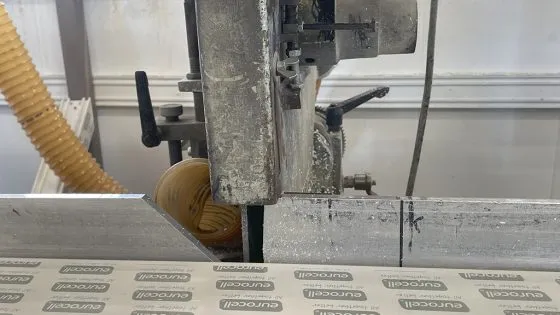A window manufacturing firm in Sheffield has been fined after a 19-year-old worker lost parts of two fingers in a cross-cut saw incident.
Ford Windows Ltd was ordered to pay a £100,000 fine plus costs following a hearing at Sheffield Magistrates Court on 28 April, according to the Health and Safety Executive (HSE).
An HSE investigation found that the firm had failed on several fronts, including risk assessment, guarding of machinery and provision of training.
The incident occurred on 19 July 2023 at a Ford Windows site in Sheffield, when the teenage male worker attempted to cut a wet windowsill that had been stored outside in the rain.
His hand slipped into an unguarded part of the saw blade when he tried to cut the windowsill, the HSE said in a statement last week.
The health and safety watchdog did not disclose the worker’s name.
It said that Ford Windows had not carried out a suitable or sufficient risk assessment of the cross-cut saw; had failed to properly adjust the machine’s nose guard to limit blade exposure; and did not ensure wet materials were dried before cutting.
In addition, investigators noted that Ford Windows had not provided adequate information, instruction or training to workers operating the machinery.
Ford Windows, of Catley Road, Darnall, Sheffield, pleaded guilty to breaching Section 2(1) of the Health and Safety at Work etc Act 1974.
In addition to the £100,000 fine, the firm was ordered to pay £4,227.50 in costs, the HSE said.
HSE principal inspector Chris Tilley said: “The company failed in several areas, they had no competent person responsible for health and safety at the site, they failed to conduct a suitable and sufficient risk assessment and therefore did not have a suitable safe system of work for the safe use of the saw, which left the nose guard of the saw incorrectly positioned.”
He added: “If the company had taken the time to risk assess the required controls to safely use the cross-cut saw, they would have found that suitable measures could have been implemented for zero cost, as the guard was available on the machine and simply needed manually adjusting to guard the blade.”

